Elements of Art Used in Love and Pain Painting
'Dearest is merely a madness' – William Shakespeare, Every bit You Like It
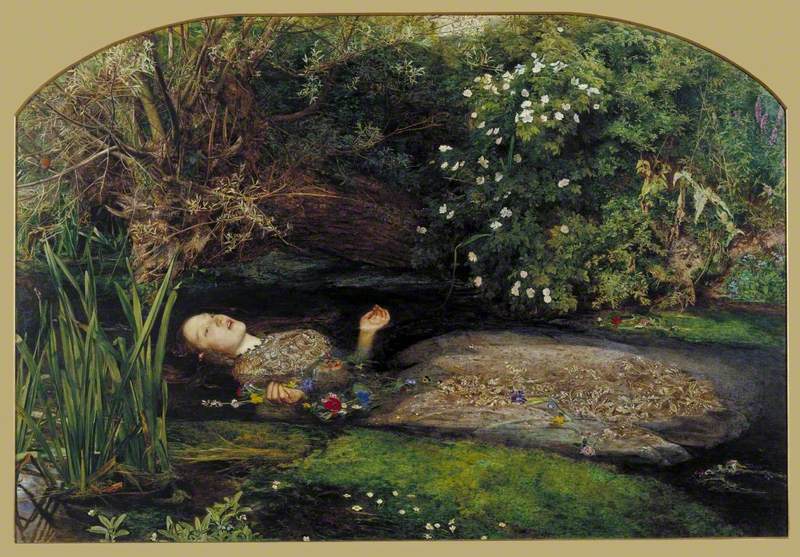
Throughout history, philosophers, writers and psychologists have viewed love as a malady – a kind of mania that tin drive us to dizzying heights of euphoria, to the depths of despair, or fifty-fifty utter madness.
Whether or not you lot agree with this theory, I'chiliad certain many of u.s. tin agree that Valentine's Day can exist a rather nauseating social event. Cerise roses, heart-shaped chocolates, stuffed toys. It's all one big cliche isn't it? You'd have to be mad to buy that stuff – oh wait.
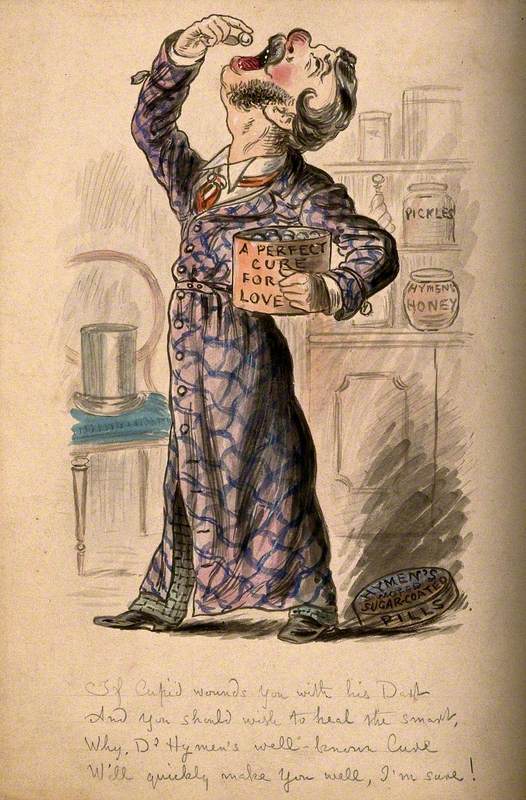
We're going to celebrate this annual event in another way, past because how artists have depicted delusional lovesickness...
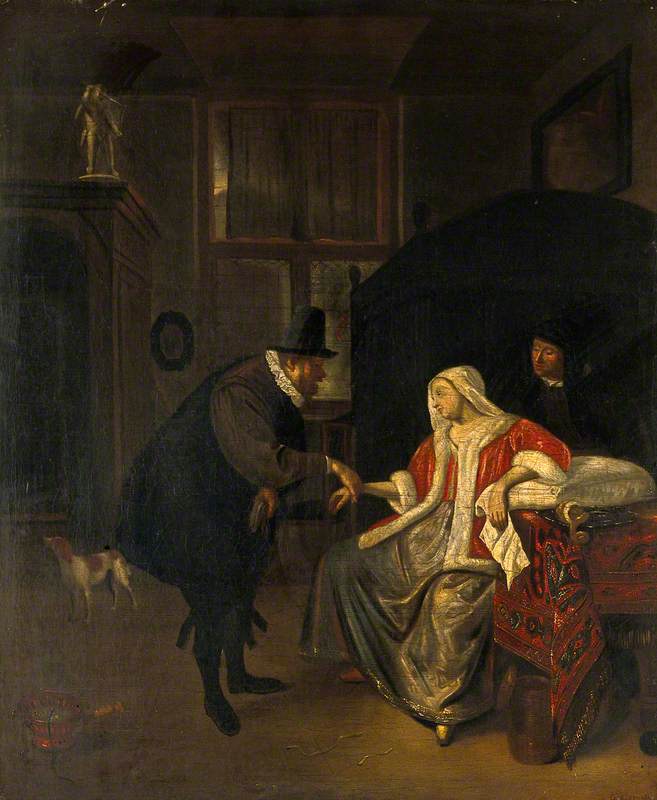
Love is blind
'Beloved is blind and lovers cannot see the pretty follies that themselves commit' – William Shakespeare, The Merchant of Venice
The expression 'honey is blind' – essentially meaning that you tin can't assistance who you autumn in love with – has endured for centuries. The aphorism is perchance no better illustrated than in the classical story of Pygmalion, in which a sculptor falls in beloved with his own creation – a statue of a beautiful woman. In the story, Aphrodite, the Greek goddess of love, grants Pygmalion's wish and turns the ivory statue into a real-life adult female. Pygmalion's erotic obsessions for an inanimate object go a reality (this is, like a lot of Greek mythology, quite disturbing by today's standards).

If it's possible to fall in love with a curvaceous block of elephant tusk, then love truly is blind.
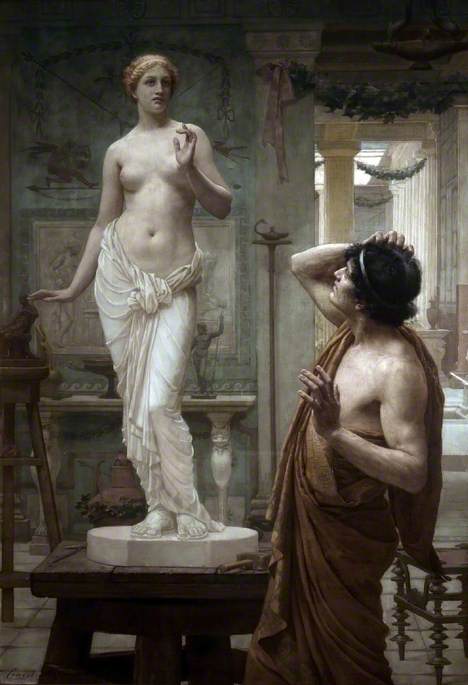
The story of Pygmalion can be constitute in Ovid'south Metamorphoses, which was after adapted into a play past the Nobel Prize-winning Irish playwright George Bernard Shaw. The classical narrative had a resurgence in popularity during the Victorian era, and artists such as the Pre-Raphaelite Edward Burne-Jones also painted Pygmalion. Shaw'south play was the inspiration for the 1964 film musical My Fair Lady, in which Audrey Hepburn plays Eliza Doolittle – a loud-mouthed, yet loveable cockney flower girl from Covent Garden, who is given elocution lessons to be 'elevated' from her social class.

The idea and expression that 'love is blind' appears in many Shakespeare plays, in particular Romeo and Juliet, but was showtime used in Geoffrey Chaucer's Merchant's Tale.

Love and melancholia
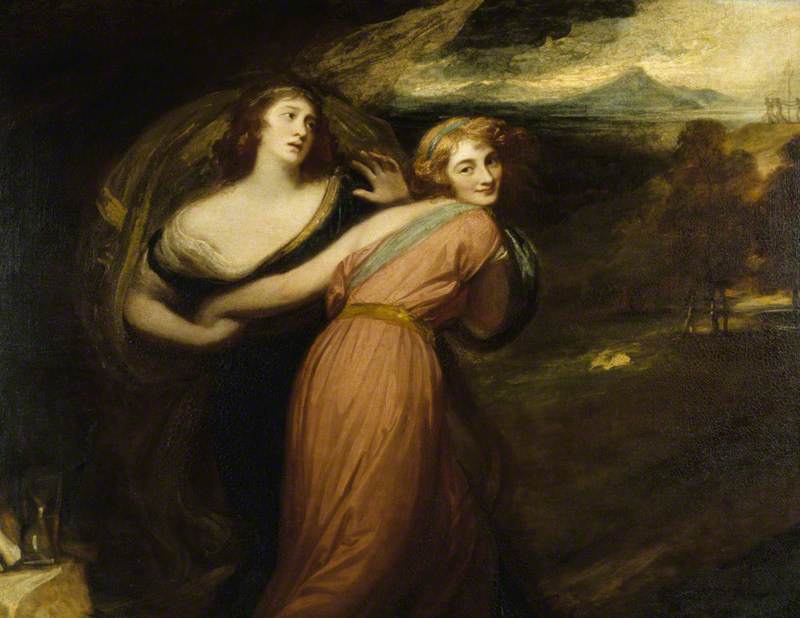
In the twelfth century, the physician Gérard du Drupe wrote extensively about the condition of 'lovesickness' which, he believed, was an imbalanced constitution due to the trauma of unrequited love. Co-ordinate to Berry, untreated lovesickness ultimately led to coldness and melancholia, a depressive status also theorised past Robert Burton in his The Anatomy of Melancholy (1638).

In the medieval period, the condition of lovesickness was taken and then seriously, medical treatments really did exist. Today nosotros turn to terrible romantic comedies, ask Google for communication, attempt to avoid seeing our ex on social media, and probably swallow disgusting amounts of ice foam. Only in the medieval era, remedies included the root of hellebore, exposure to light, gardens, calm and residue, inhalations, and warm baths with plants such as water lilies and violets. (Actually, can we bring this blazon of love rehab back please?)
An excessive amount of 'blackness bile', which we today call sadness or melancholy, was symptomatic of lovesickness, treated through purgatives, laxatives and blood-letting. (Peradventure don't attempt any of these at home.)
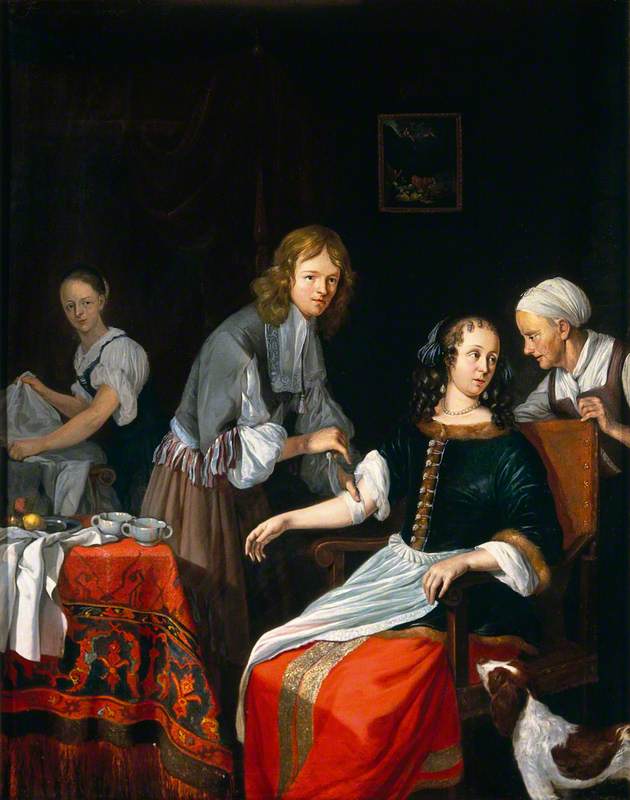
In fact, the notion of the 'four humours' was taken from Hippocrates, Galen and other ancient physicians. It was an idea that persisted until the Center Ages. The four humours were described as melancholic (black bile), phlegmatic (phlegm), choleric (yellow bile) and sanguine (blood). Information technology was believed that the
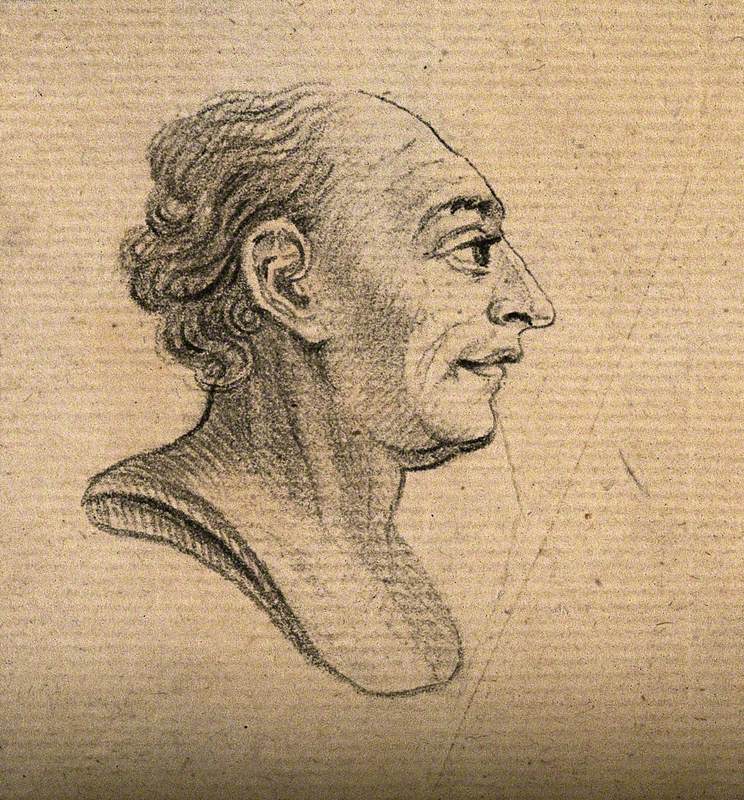
For Shakespeare, melancholy was the most complex of emotions, exemplified by his tragic character Ophelia, whose unrequited love for
Dazzler is in the eye of the beholder
Another grade of delusional love is narcissism, which has perhaps get more normalised in contemporary club. The notion of excessive self-love (in a not-concrete sense...) was first discussed past the aboriginal
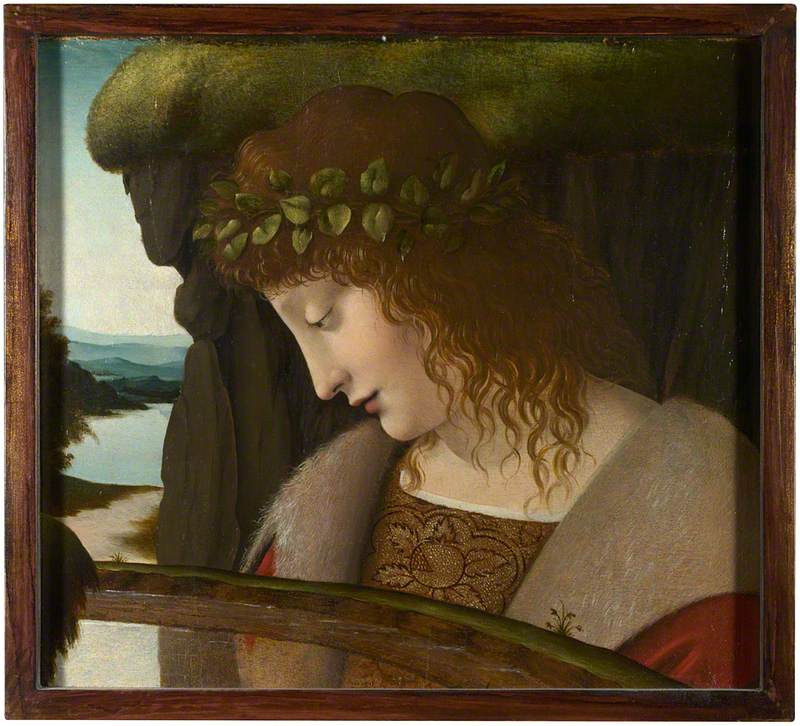
In the original Greek myth, the young, beautiful Narcissus vicious in dearest with his own image reflected in a puddle of water. Yet unable to complete his dear, Narcissus 'lay gazing enraptured into the puddle, hour after 60 minutes', until he inevitably perished by drowning. In the story, Narcissus takes pleasure in rejecting others, when they too fall in love with his dazzler. Echo, a mount nymph, is left heartbroken, remaining simply as an echo after Narcissus tells her bluntly he's just not into it (we've paraphrased from the Ancient Greek here).
Today, narcissism is considered a class of personality disorder, while paradoxically, others – for example, these readers of Elite Daily – debate that a healthy bout of narcissism can be a good thing.
The jury's nonetheless out on this one.
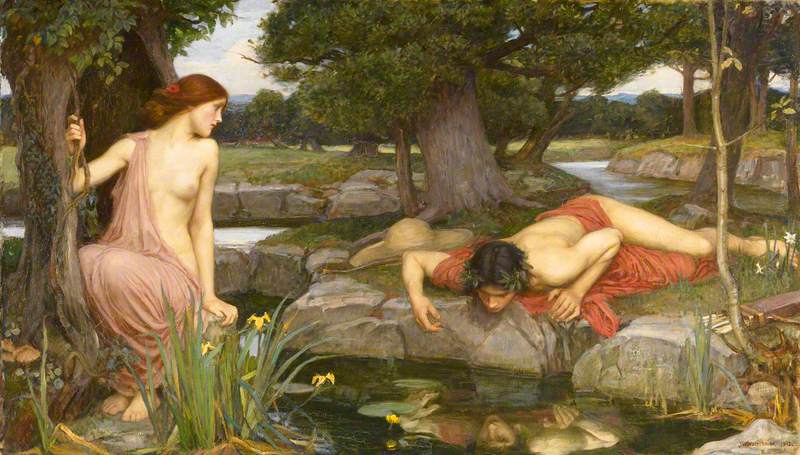
All is fair in love and war
This expression originates non from Shakespeare (equally it is often mistaken), just from John Lyly's Euphues (c.1578). In brusque, it means that null is off limits when information technology comes to honey and war – anything becomes adequate on the battlefield. And, as Pat Benatar once sagely pointed out, honey is indeed a battleground.

This idea held some sway before the 1980s. Take, for example, the story of Antiochus I, a young Hellenic prince who falls madly in dearest with his stepmother Stratonice (awkward). The young prince is so desperately in love with his father's young wife that he falls seriously ill. Scenes of the Greek medico Erasistratus taking his pulse and diagnosing him with 'lovesickness' have been portrayed past artists for over the by 2,000 years, with some of the near famous depictions past Bellucci, Benjamin Due west, Guillemot, Ingres and Jacques–Louis David.

Surprisingly, this story has a happy ending. Upon learning that his son was shut to death because of lovesickness, Seleucus, King of Syria, allowed Antiochus to marry his wife.
We tin only speculate what their family dinners were similar afterwards... Please pass the common salt?
The form of truthful dear never did run
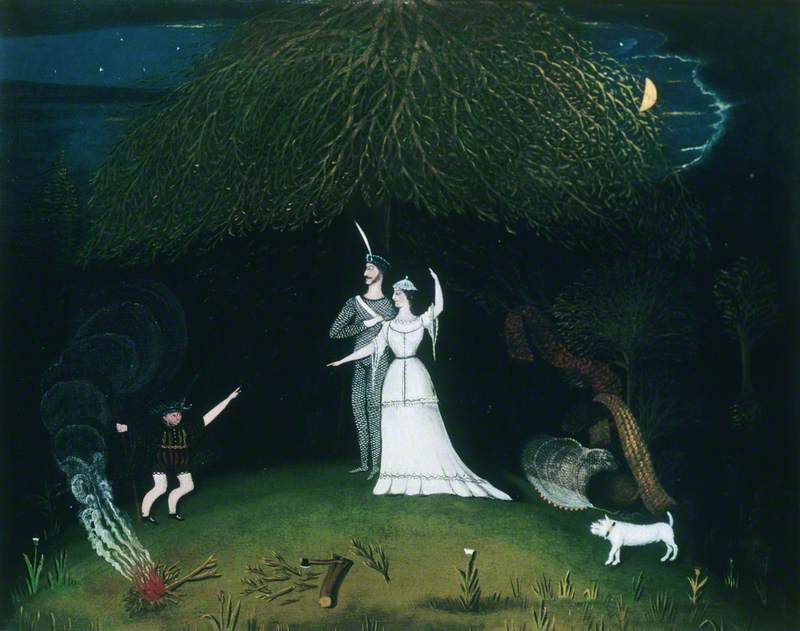
Here is some other Shakespearean proverb which is still used today, originating from the pop comedy A Midsummer Night's Dream. The play also centred around Shakespeare's confidence that dearest and madness were inextricably linked – 'lovers and madmen have such seething brains, such shaping fantasies, that apprehend more than cool reason always comprehends.' In short, don't endeavour squeezing whatever rationality out of a lovesick fool.
Within this farcical romantic comedy, four Athenian lovers are manipulated by ethereal woodland fairies, poisoned by Cupid's arrow, and duped by the mischievous sprite Puck. Subsequently drinking a love potion, they all get terribly confused and autumn in love with the showtime character they encounter upon waking.
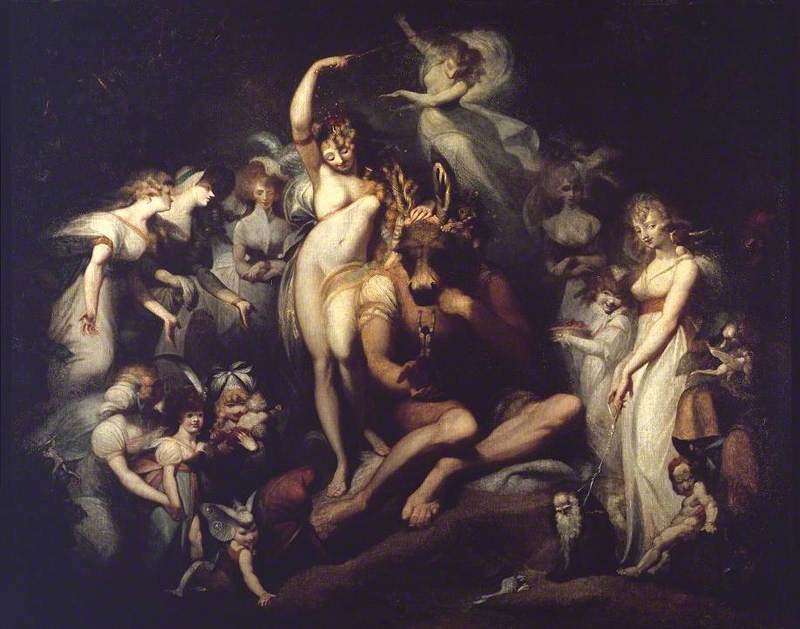
Here, Henry Fuseli has depicted Queen Titania falling in love with Nick Bottom, whose head was turned into that of an donkey's (again, love is bullheaded).
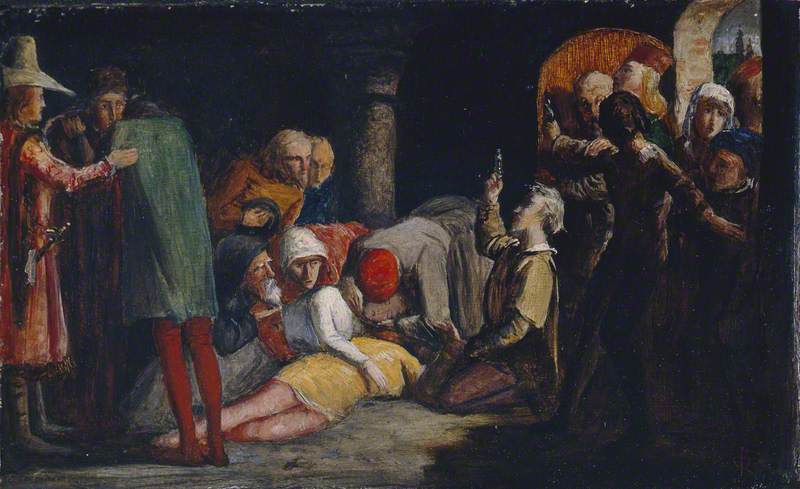
Different Shakespeare's most famous tragedy Romeo and Juliet, there is a happy ending to this one.
Honey actually IS all around...
This one certainly isn't Shakespeare... and if you lot are offended past this quote from an (arguably) Brit Christmas classic, you will probably enjoy this Jezebel article.
To conclude, before this commodity makes you contemptuous about love, allow'southward consider the many upsides.
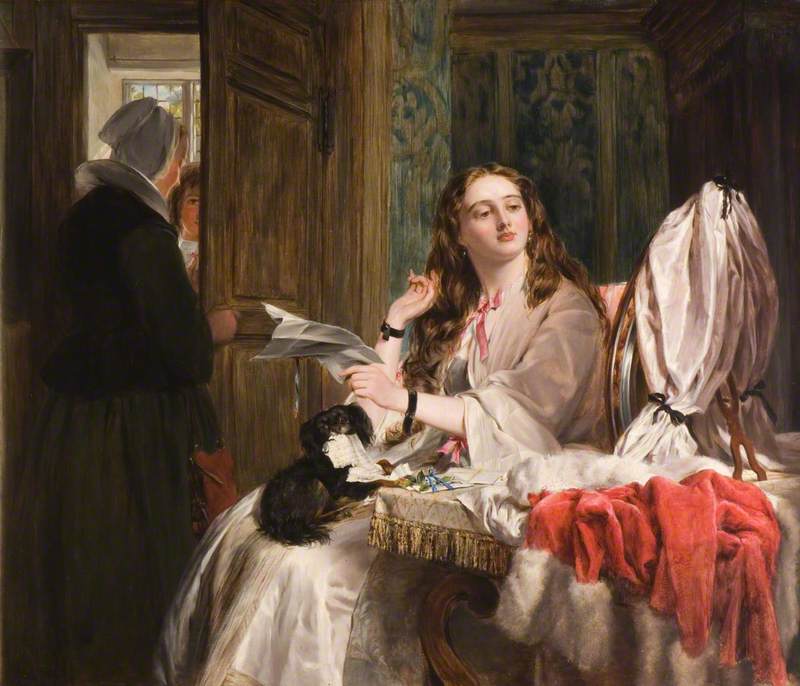
Despite some of the less favourable symptoms that appear on the broad spectrum of lovesickness – nausea, alarming heart palpitations, lark, profound and unrelenting sadness – one can contend that falling in love is likewise one of life's near worthwhile experiences, especially if (permit's hope) it is reciprocated.
But on an entirely different annotation, the universally understood subject matter of love and romantic failure has given u.s. some of the best and most celebrated novels, music, poems, paintings, plays and films. Moreover, sometimes romantic failure tin be a blessing in disguise.
On that notation, nosotros will leave you with this disgustingly cringeworthy conclusion – if beloved is indeed a sickness, so it is owned and utterly incurable.
Lydia Figes, Content Creator at Art UK
More stories
Artworks
Source: https://artuk.org/discover/stories/lovesick-blues-a-short-history-of-love-and-pain-in-art
0 Response to "Elements of Art Used in Love and Pain Painting"
Post a Comment